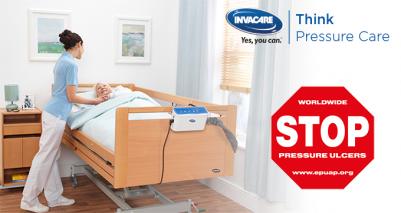We care deeply about pressure ulcer prevention and have been working tirelessly with Healthcare Professionals for over 25 years to help prevent these largely avoidable wounds that can cause so much discomfort.
Pressure ulcers are also known as bed sores, pressure sores or decubitus ulcers. This means that you have a wound or injury to the skin and or tissue under the skin caused by shear and/or pressure. Pressure ulcers are more common on the back, buttocks, hips, and heels but can also form on any bony area.
What causes pressure ulcers?
When someone must sit or lie for a long-time due to illness, disability or reduced mobility, pressure can build up. This can slow or stop blood getting to the area under pressure; it doesn’t take long for pressure to damage the skin. This can happen in as little as 2 hours if in the same position. This is why it’s very important to move often or have a carer or loved one help you move position regularly. Also there are many other factors that can increase your risk, such as poor hydration, nutrition, some medications, incontinence and ability to regulate your temperature.
Below are words that describe the movement of your skin whether it’s being compressed, pulled, rubbed or stretched.
Shear force
Shear forces are sometimes described as stretching forces and are caused by the effects of gravity. When someone slides up or down a bed or chair, shear forces pull on the skin. When this happens the upper layers of skin can be pulled away from the deeper layers of skin and tissue; causing damage.
Pressure
The pressure from a surface when lying or sitting compresses the skin and tissue underneath between the surface of the mattress or seat cushion and the bony parts of the body. When skin and tissue is compressed against the surface for a prolonged period it can cause pressure sores.
There are different categories of pressure ulcers, depending on how severe they are.
If a pressure ulcer is suspected, your healthcare professional may perform a simple test to establish if the area is a category one pressure ulcer. This is one of the first signs of pressure damage. It is better to identify an area of pressure damage as soon as possible to avoid it getting worse.
You can learn more about Pressure Ulcer Classification here
Treatment
Pressure ulcers, depending on their severity, may be treated with dressings and topical medicines, such as creams or ointments. There are some occasions where more treatment is needed. For example, if your wound becomes infected your healthcare professional may prescribe antibiotics, as an infection may mean it would take longer for the wound to heal. Other treatments include debridement and sometimes the use of specialist equipment to help heal the wound.
Equipment
Using specially designed high specification foam mattresses or cushions, or dynamic mattresses and cushions that have a pump providing a flow of alternating air pressure can help prevent pressure ulcers developing or worsening. Equipment should always be used in conjunction with regular re-positioning. Remember - it is very important to move often or have a carer or loved one move you regularly.
Please remember if you think you or someone you care for may have a pressure ulcer, consult a healthcare professional. More information can be found here









